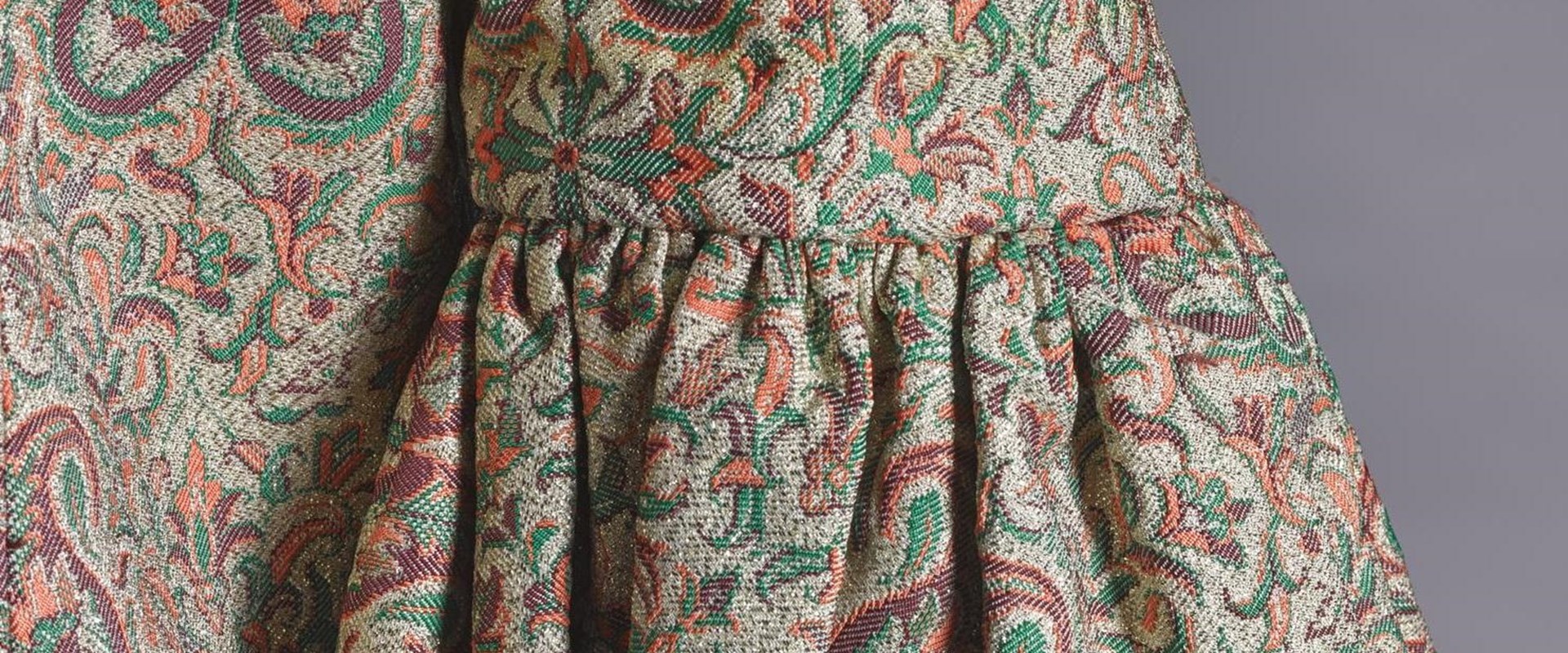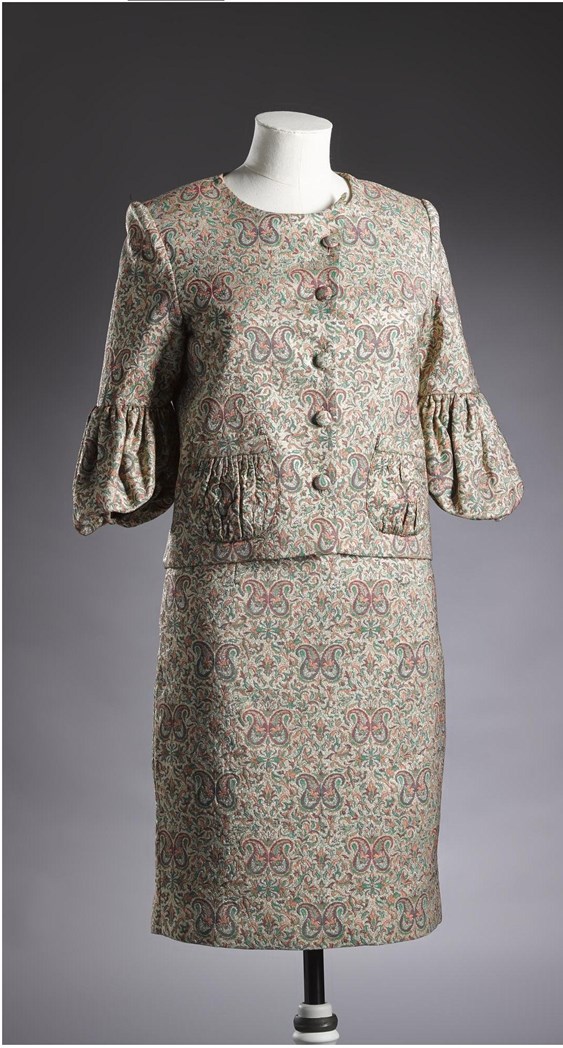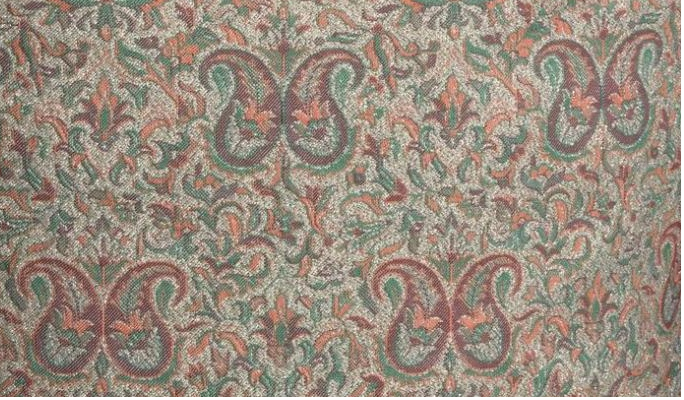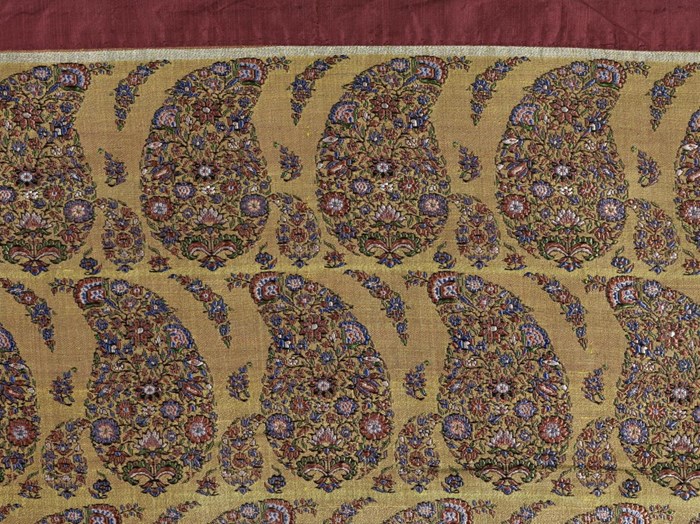Key in a search term below to search our website.
Key in a search term below to search our website.

Dubai born designer Kourosh Gharbi explores the significance of Iranian brocade, or termeh, in his European style dresses.
Inspired by Christian Dior’s legendary creation of the 1950s, in this suit Gharbi paired a knee-length pencil skirt with a tight-fitting jacket. Slightly tapered at the hemline, the classic look of a pencil skirt draws the eyes to the hips. With its puffed three-quarter length sleeves and round neckline, the coordinated top incorporates elements of both – a jacket and a blouse.
The striking elegance of the dress is mirrored in the exquisiteness of the fabric. Gharbi chose one of Iran’s most valued textiles for his creation – brocade, in Persian termeh. The fabric is famous for boasting a wide range of colours woven into intricate patterns. Here, delicate leaves and blossoms in crimson, orange and green are set against a silver-coloured background.

Above: Skirt suit © Kourosh Gharbi. Accession number V.2015.11.1-2.
The most prominent motif of this fabric's pattern is the double boteh. The boteh motif has the shape of a drop, with its pointed end usually bent to one side. In the West it became well-known as Paisley pattern. In the design of this fabric, the drop-shaped outlines each enclose a feathered leaf. The boteh motif resembles the cypress tree which in popular belief is said to bend its head in respect before God.

Above: Detail of the fabric's pattern with double boteh motifs.

Above: Boteh motifs filled with peonies, lotus and rosette flowers on a woman’s trousers, Iran, 1800-1880.
“The designs I’ve created complement the quality of the termeh I’ve chosen.- Kourosh Gharbi
In video below, Kourosh discusses his termeh dresses.